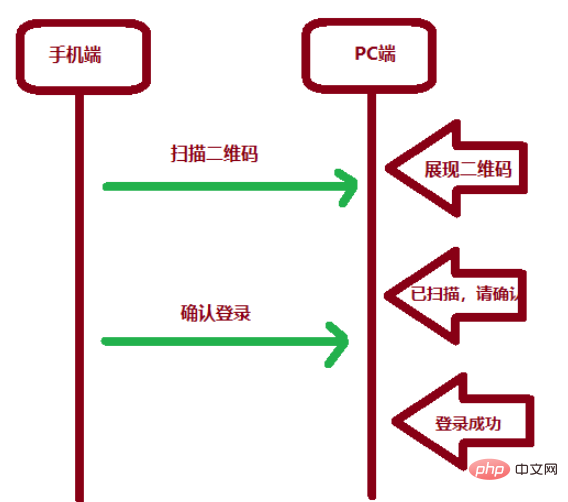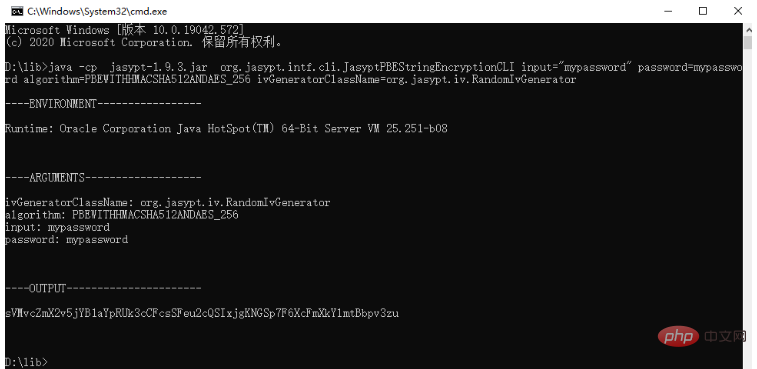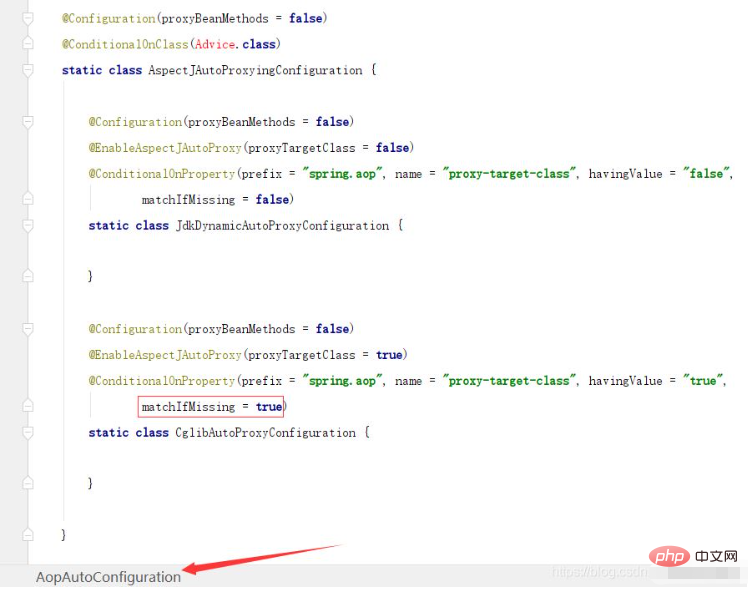 Java
Java javaTutorial
javaTutorial Compare the differences and commonalities between SpringCloud and SpringBoot for an in-depth analysis
Compare the differences and commonalities between SpringCloud and SpringBoot for an in-depth analysis
In-depth analysis of the similarities and differences between SpringCloud and SpringBoot
Introduction:
The Spring framework has become the first choice for developers when building enterprise-level applications. It provides a simple and powerful way to build platform-independent applications. The Spring framework consists of two core modules: SpringBoot and SpringCloud. Although they can both help developers build applications quickly, there are some differences in their goals and uses. This article will provide an in-depth analysis of the similarities and differences between Spring Cloud and Spring Boot.
1. Overview of SpringBoot:
SpringBoot is a framework for building independent, deployable, production-grade Spring applications. It cancels complex configuration and provides automatic configuration functions, allowing developers to focus more on the implementation of business logic. SpringBoot emphasizes "convention over configuration" and greatly reduces developers' workload through automated configuration. It provides a fast and easy way to get Spring applications up and running, and integrates seamlessly with other frameworks such as Spring Cloud.
2. Overview of SpringCloud:
SpringCloud is a toolbox for building distributed systems. It is built on Spring Boot and provides a series of components and patterns to enable developers to easily build and manage distributed systems. SpringCloud provides service discovery, load balancing, remote calling, configuration center, circuit breaker and other functions, which greatly simplifies the complexity of building distributed systems. It provides an architectural pattern and a set of tools to help developers build resilient, reliable, and scalable distributed applications.
3. The relationship between SpringBoot and SpringCloud:
SpringCloud is built on SpringBoot. It extends the functions of SpringBoot and provides a series of distributed system support. SpringBoot can be used independently, while SpringCloud needs to be based on SpringBoot. SpringBoot provides the ability to quickly build monolithic applications, while SpringCloud provides the necessary tools and components for building distributed applications.
4. Analysis of similarities and differences:
- Objectives and purposes:
SpringBoot mainly focuses on quickly building independent applications and provides simplified configuration and automation functions. Its goal is to enable developers to get applications up and running faster. SpringCloud focuses on building distributed systems and provides a series of distributed system support. Its goal is to make it easier for developers to build and manage distributed applications. - Architectural style:
SpringBoot follows the microservice architectural style and improves scalability and maintainability by splitting large applications into a set of loosely coupled services. Spring Cloud provides a set of tools and components designed for building microservice architecture. It provides functions such as service registration and discovery, load balancing, circuit breakers, gateways, and configuration centers. - Functional components:
SpringBoot provides automatic configuration, startup dependencies, embedded servers and other functions, allowing developers to start and run applications faster. Spring Cloud provides service discovery, load balancing, remote calling, circuit breakers, configuration center and other functions to help developers build elastic, reliable and scalable distributed applications. - Integration and extension:
SpringBoot can be used independently or seamlessly integrated with other frameworks, such as SpringCloud, SpringMVC, etc. SpringCloud is built on SpringBoot and provides a series of components and patterns related to distributed systems. It provides a wealth of extension points and plug-ins, allowing developers to customize and expand according to their own needs. - Ecosystem:
SpringBoot has a huge ecosystem and active community support, providing a large number of starting dependencies and plug-ins to meet various needs. SpringCloud is built on SpringBoot and also relies on the SpringBoot ecosystem. It also has its own ecosystem and community support, providing a series of components and patterns that enable developers to easily build and manage distributed systems.
Conclusion:
SpringBoot and SpringCloud are aimed at different application scenarios, with different goals and uses. SpringBoot mainly focuses on quickly building independent applications, providing simplified configuration and automated functions. SpringCloud focuses on building distributed systems and provides a series of distributed system support. They complement each other. SpringCloud is built on SpringBoot and provides a set of tools and components that allow developers to easily build and manage distributed systems. Whether building independent applications or distributed applications, the Spring framework is the first choice for developers and can help developers quickly build efficient and reliable applications.
The above is the detailed content of Compare the differences and commonalities between SpringCloud and SpringBoot for an in-depth analysis. For more information, please follow other related articles on the PHP Chinese website!
 怎么使用SpringBoot+Canal实现数据库实时监控May 10, 2023 pm 06:25 PM
怎么使用SpringBoot+Canal实现数据库实时监控May 10, 2023 pm 06:25 PMCanal工作原理Canal模拟MySQLslave的交互协议,伪装自己为MySQLslave,向MySQLmaster发送dump协议MySQLmaster收到dump请求,开始推送binarylog给slave(也就是Canal)Canal解析binarylog对象(原始为byte流)MySQL打开binlog模式在MySQL配置文件my.cnf设置如下信息:[mysqld]#打开binloglog-bin=mysql-bin#选择ROW(行)模式binlog-format=ROW#配置My
 Spring Boot怎么使用SSE方式向前端推送数据May 10, 2023 pm 05:31 PM
Spring Boot怎么使用SSE方式向前端推送数据May 10, 2023 pm 05:31 PM前言SSE简单的来说就是服务器主动向前端推送数据的一种技术,它是单向的,也就是说前端是不能向服务器发送数据的。SSE适用于消息推送,监控等只需要服务器推送数据的场景中,下面是使用SpringBoot来实现一个简单的模拟向前端推动进度数据,前端页面接受后展示进度条。服务端在SpringBoot中使用时需要注意,最好使用SpringWeb提供的SseEmitter这个类来进行操作,我在刚开始时使用网上说的将Content-Type设置为text-stream这种方式发现每次前端每次都会重新创建接。最
 SpringBoot怎么实现二维码扫码登录May 10, 2023 pm 08:25 PM
SpringBoot怎么实现二维码扫码登录May 10, 2023 pm 08:25 PM一、手机扫二维码登录的原理二维码扫码登录是一种基于OAuth3.0协议的授权登录方式。在这种方式下,应用程序不需要获取用户的用户名和密码,只需要获取用户的授权即可。二维码扫码登录主要有以下几个步骤:应用程序生成一个二维码,并将该二维码展示给用户。用户使用扫码工具扫描该二维码,并在授权页面中授权。用户授权后,应用程序会获取一个授权码。应用程序使用该授权码向授权服务器请求访问令牌。授权服务器返回一个访问令牌给应用程序。应用程序使用该访问令牌访问资源服务器。通过以上步骤,二维码扫码登录可以实现用户的快
 spring boot怎么对敏感信息进行加解密May 10, 2023 pm 02:46 PM
spring boot怎么对敏感信息进行加解密May 10, 2023 pm 02:46 PM我们使用jasypt最新版本对敏感信息进行加解密。1.在项目pom文件中加入如下依赖:com.github.ulisesbocchiojasypt-spring-boot-starter3.0.32.创建加解密公用类:packagecom.myproject.common.utils;importorg.jasypt.encryption.pbe.PooledPBEStringEncryptor;importorg.jasypt.encryption.pbe.config.SimpleStrin
 SpringBoot/Spring AOP默认动态代理方式是什么May 10, 2023 pm 03:52 PM
SpringBoot/Spring AOP默认动态代理方式是什么May 10, 2023 pm 03:52 PM1.springboot2.x及以上版本在SpringBoot2.xAOP中会默认使用Cglib来实现,但是Spring5中默认还是使用jdk动态代理。SpringAOP默认使用JDK动态代理,如果对象没有实现接口,则使用CGLIB代理。当然,也可以强制使用CGLIB代理。在SpringBoot中,通过AopAutoConfiguration来自动装配AOP.2.Springboot1.xSpringboot1.xAOP默认还是使用JDK动态代理的3.SpringBoot2.x为何默认使用Cgl
 使用Java SpringBoot集成POI实现Word文档导出Apr 21, 2023 pm 12:19 PM
使用Java SpringBoot集成POI实现Word文档导出Apr 21, 2023 pm 12:19 PM知识准备需要理解ApachePOI遵循的标准(OfficeOpenXML(OOXML)标准和微软的OLE2复合文档格式(OLE2)),这将对应着API的依赖包。什么是POIApachePOI是用Java编写的免费开源的跨平台的JavaAPI,ApachePOI提供API给Java程序对MicrosoftOffice格式档案读和写的功能。POI为“PoorObfuscationImplementation”的首字母缩写,意为“简洁版的模糊实现”。ApachePOI是创建和维护操作各种符合Offic
 springboot怎么整合shiro实现多验证登录功能May 10, 2023 pm 04:19 PM
springboot怎么整合shiro实现多验证登录功能May 10, 2023 pm 04:19 PM1.首先新建一个shiroConfigshiro的配置类,代码如下:@ConfigurationpublicclassSpringShiroConfig{/***@paramrealms这儿使用接口集合是为了实现多验证登录时使用的*@return*/@BeanpublicSecurityManagersecurityManager(Collectionrealms){DefaultWebSecurityManagersManager=newDefaultWebSecurityManager();
 SpringBoot项目打包发布到外部tomcat遇到的问题怎么解决May 10, 2023 pm 05:49 PM
SpringBoot项目打包发布到外部tomcat遇到的问题怎么解决May 10, 2023 pm 05:49 PM先说遇到问题的情景:初次尝试使用springboot框架写了个小web项目,在IntellijIDEA中能正常启动运行。使用maven运行install,生成war包,发布到本机的tomcat下,出现异常,主要的异常信息是.......LifeCycleException。经各种搜索,找到答案。springboot因为内嵌tomcat容器,所以可以通过打包为jar包的方法将项目发布,但是如何将springboot项目打包成可发布到tomcat中的war包项目呢?1.既然需要打包成war包项目,首


Hot AI Tools

Undresser.AI Undress
AI-powered app for creating realistic nude photos

AI Clothes Remover
Online AI tool for removing clothes from photos.

Undress AI Tool
Undress images for free

Clothoff.io
AI clothes remover

AI Hentai Generator
Generate AI Hentai for free.

Hot Article

Hot Tools

Atom editor mac version download
The most popular open source editor

MantisBT
Mantis is an easy-to-deploy web-based defect tracking tool designed to aid in product defect tracking. It requires PHP, MySQL and a web server. Check out our demo and hosting services.

Dreamweaver Mac version
Visual web development tools

PhpStorm Mac version
The latest (2018.2.1) professional PHP integrated development tool

Safe Exam Browser
Safe Exam Browser is a secure browser environment for taking online exams securely. This software turns any computer into a secure workstation. It controls access to any utility and prevents students from using unauthorized resources.





